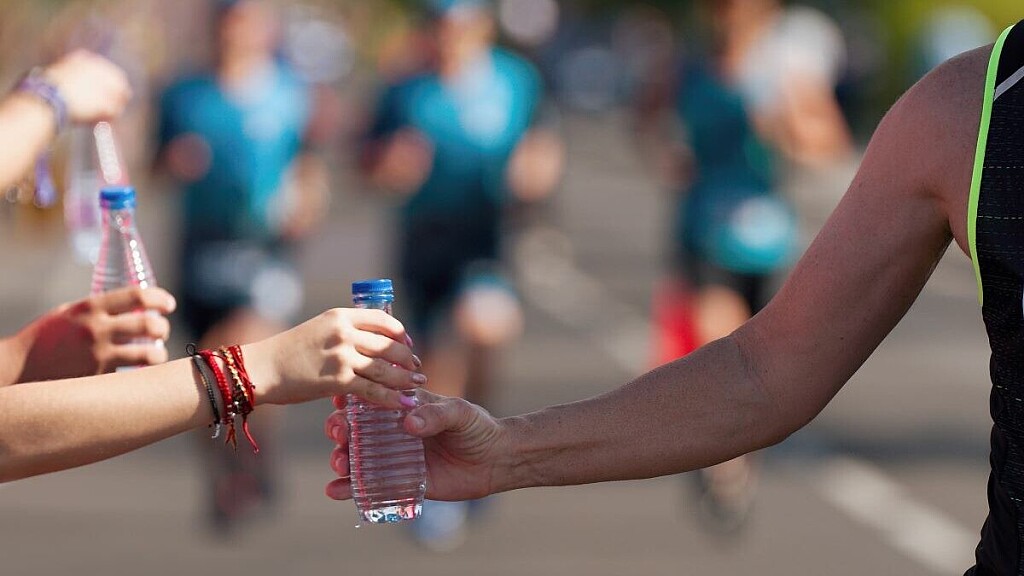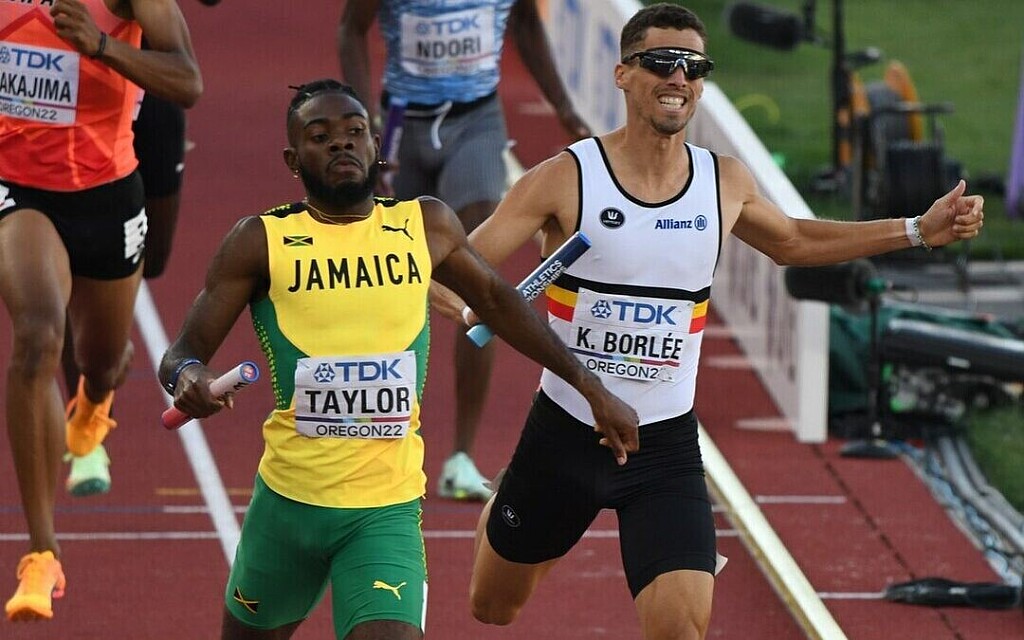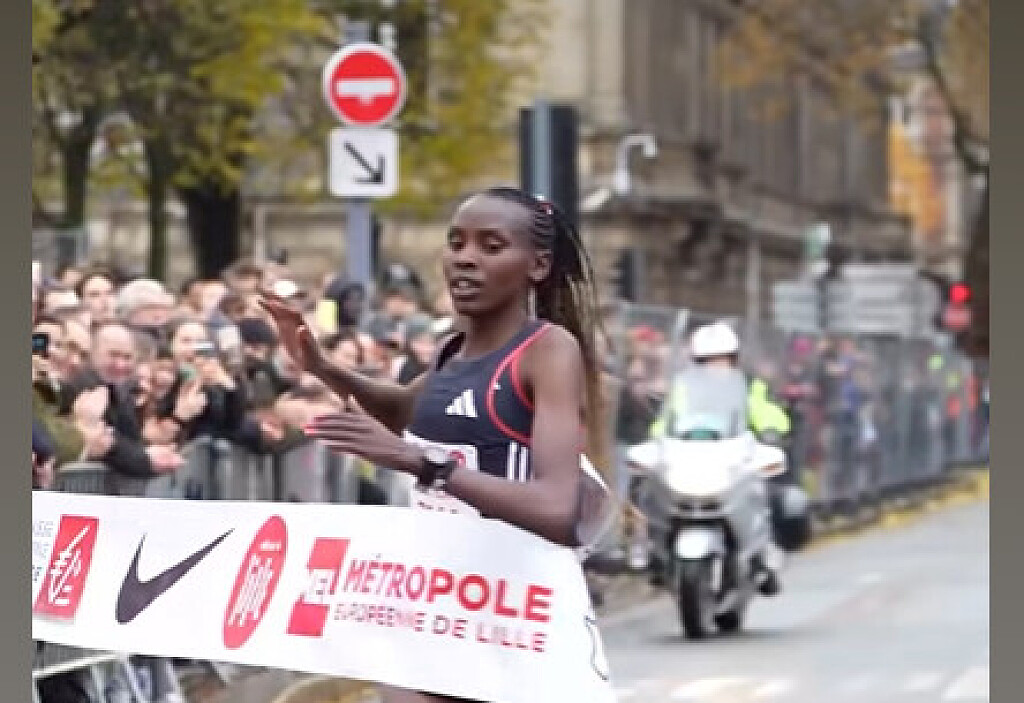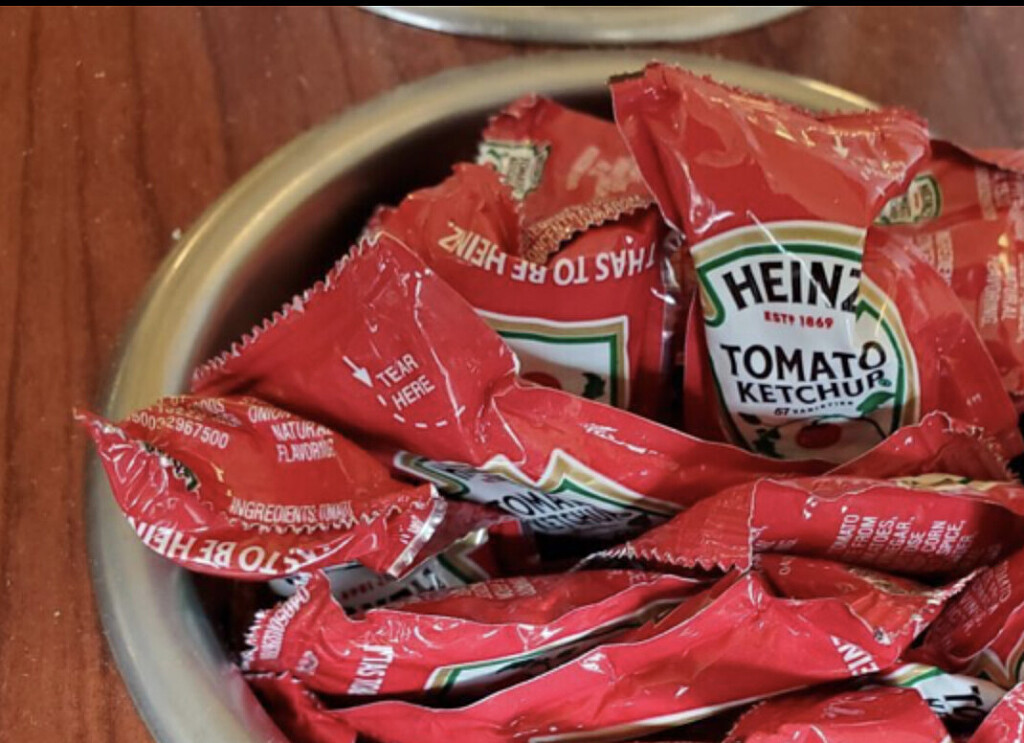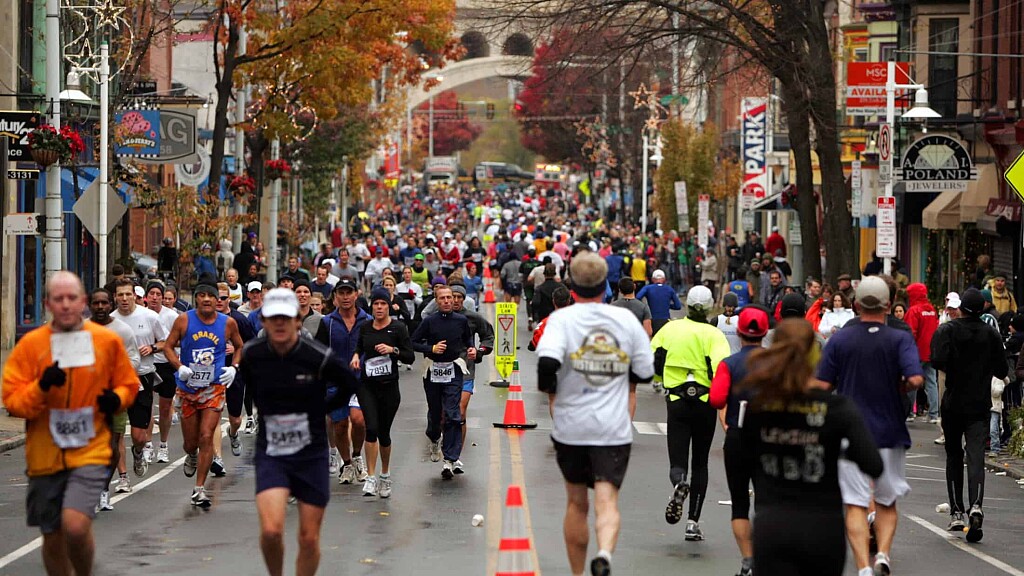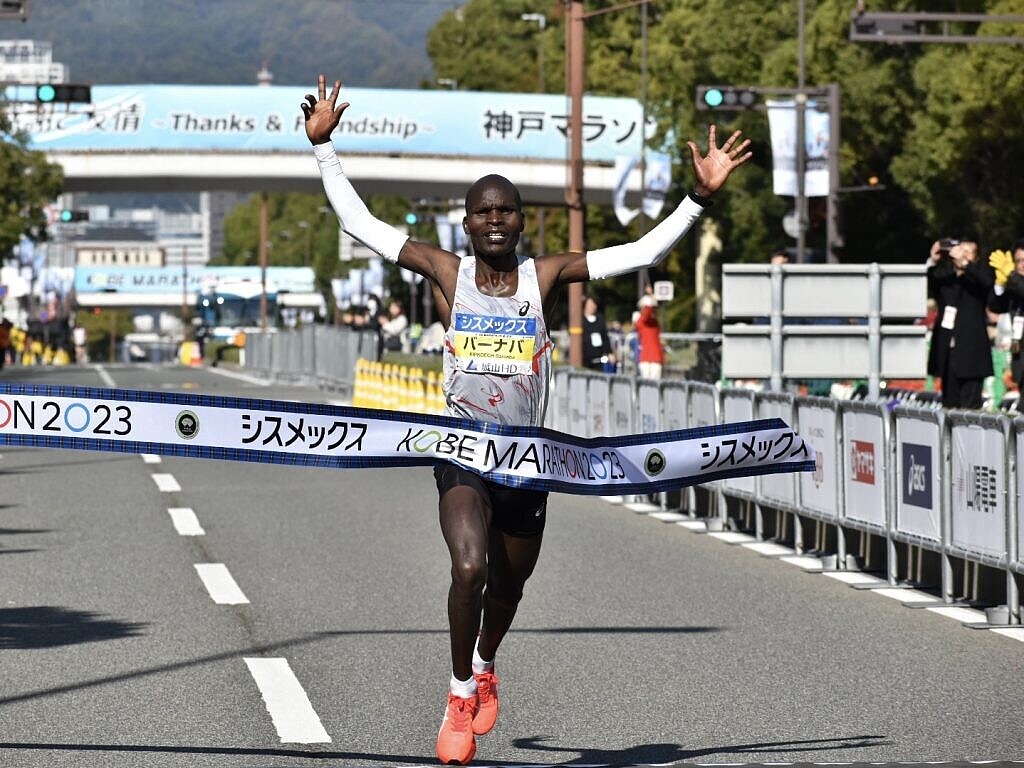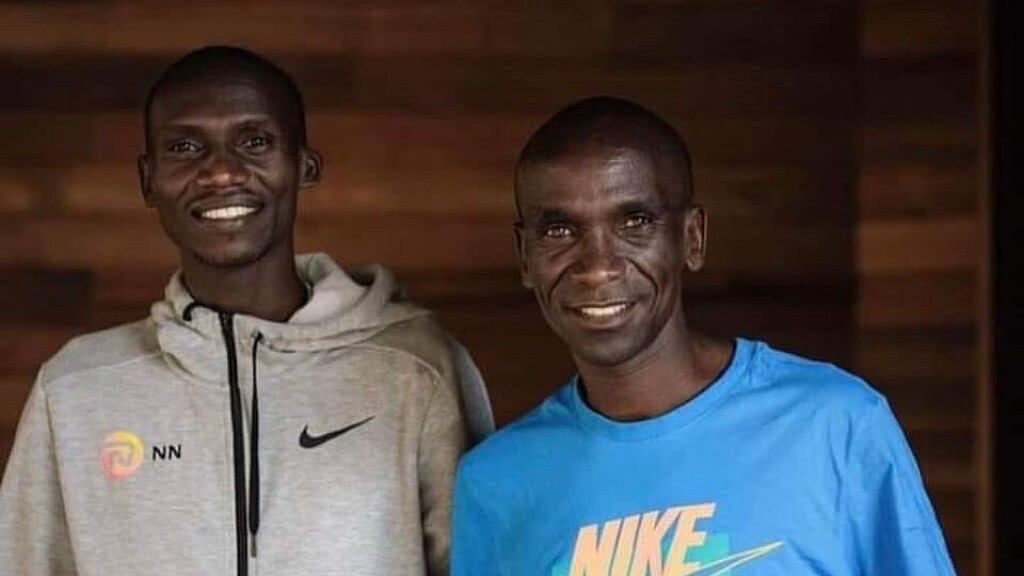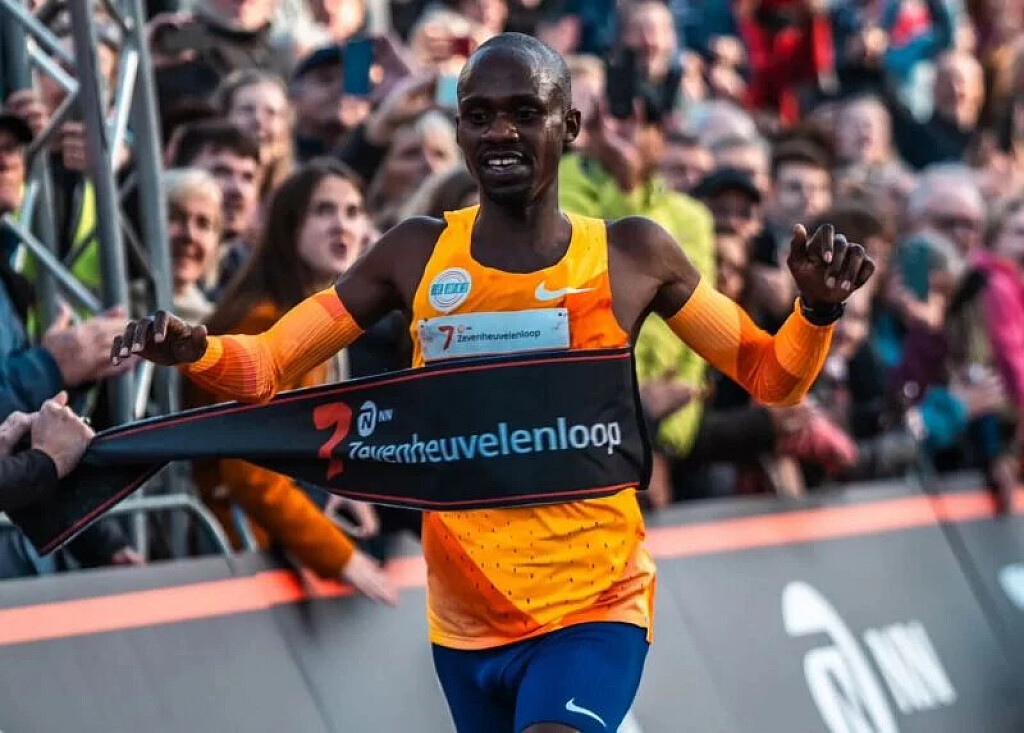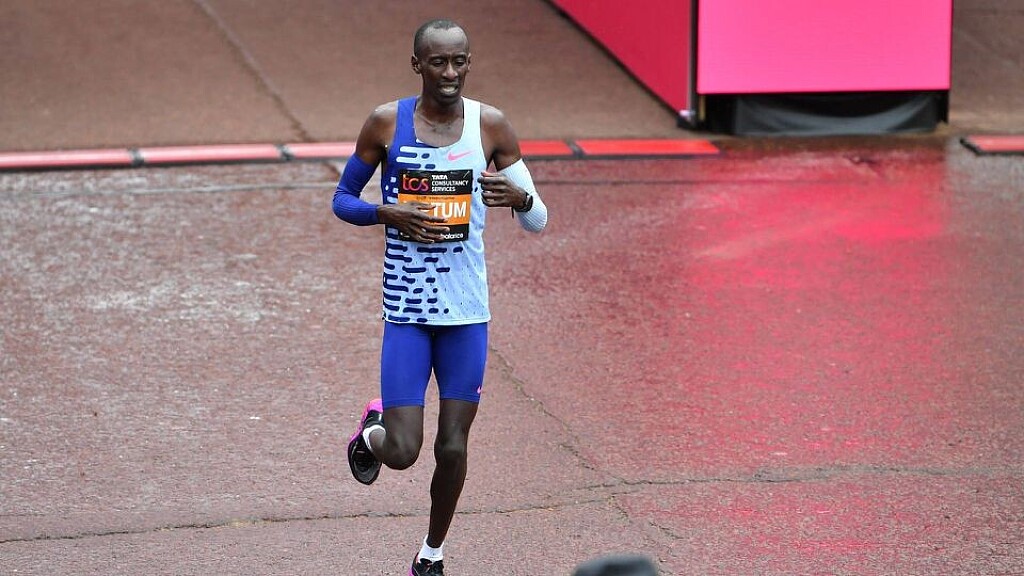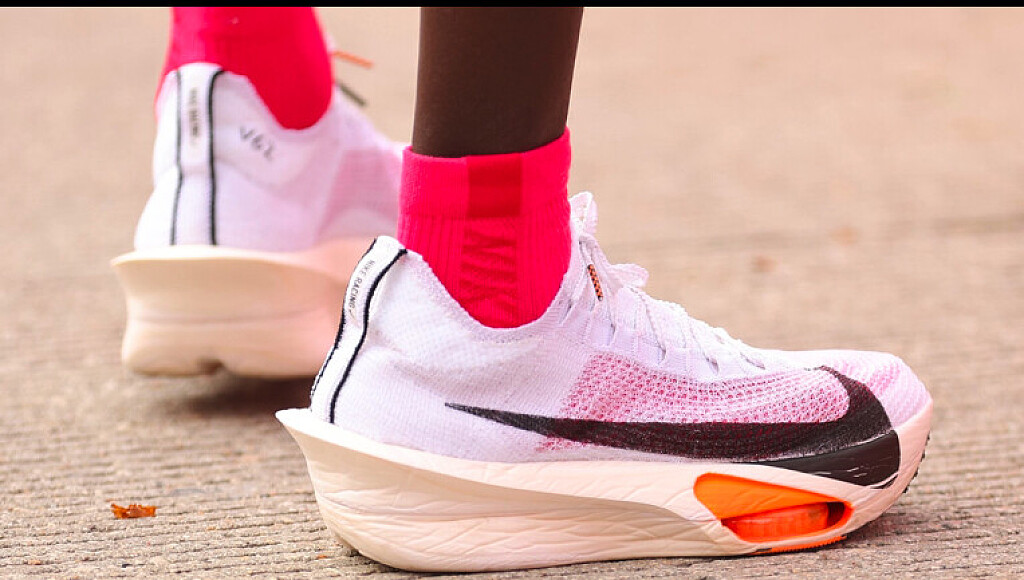Running News Daily
Top Ten Stories of the Week
11/25/2023
These are the top ten stories based on views over the last week.
Philadelphia Marathon finisher’s Olympic dreams shattered after water bottle rule violation
A formal complaint from a race official brought attention to the water bottle infraction, disqualifying Ethan Hermann from the results.
In running, seconds can make or break dreams. The 2023 Philadelphia Marathon brought a mix of triumph and heartbreak, especially for one of the top American men’s finishers, Ethan Hermann.
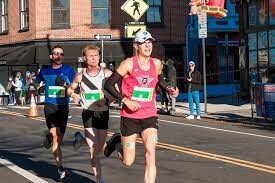
The Philadelphia native finished the marathon in sixth overall, running an impressive 2:17:03 in his debut marathon, nearly a minute under the 2024 U.S. Olympic Marathon Trials qualifying mark of 2:18:00. However, hours after Hermann crossed the finish line, his dreams were shattered when his result was disqualified due to his coach handing him a water bottle at a water station.
According to Citius Mag, which first reported the story, Hermann’s coach, in a well-intentioned act of support, handed him a water bottle at a water station. However, according to USATF rules, because Hermann did not personally grab the bottle, it constituted a violation due to the “inequality of resources offered to athletes.”
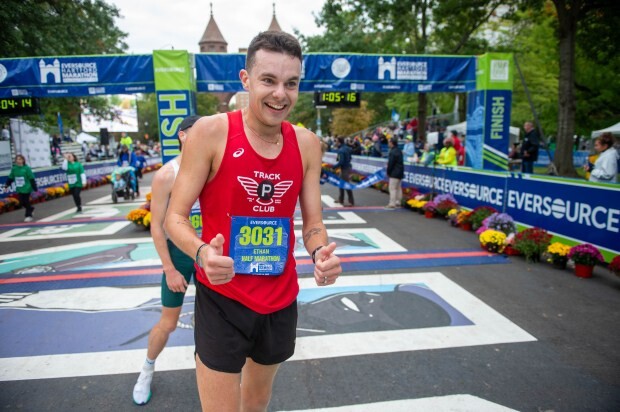
Hermann’s time has been removed from the official Philadelphia Marathon results, and it will not count for the 2024 Olympic Trials qualification.
Speaking to Citius Mag about the situation, Hermann said he does not fully agree with the rule, but understands it. “I just have to learn from it and move forward, and take on the next challenge in time,” he said. Despite the disqualification, Hermann remains positive about his result, stating, “I’m at peace and walking away knowing that my mission of qualifying for the Olympic Trials was accomplished–even if the start list will say otherwise.”
A formal complaint from a race official brought attention to Hermann’s infraction, leaving race organizers in a challenging position, due to the specificity of the USATF Competition Rule 144. “No competitor taking part in competition shall be allowed, without the permission of the Referee or Judges, to receive assistance or refreshment from anyone during the progress of the competition.”
“I had a special day and ran my heart and legs out, but I was not as educated as I thought about everything. Not all the right things happened the way they needed to, and I was ultimately given a disqualification from the race,” wrote Hermann.
The bottle rule only applies to USATF races and U.S. athletes. At the 2022 Berlin Marathon, the notorious Bottle Claus helped Eliud Kipchoge lower the marathon world record to 2:01:09 at the time, personally handing him bottles at every water station.
In a world where one false start results in automatic disqualification and triathletes face penalties for rule violations, the severity of Hermann’s case has been questioned on social media. What is the time value of a water bottle handed to a runner throughout a marathon? And how much time does it save a marathoner compared to picking it up from the elite table?
A hashtag #FreeEthan has been pushed by Citius Mag and the U.S. running community to permit Hermann to run at the 2024 U.S. Olympic Marathon Trials scheduled for Feb. 4 in Orlando, Fla.
(11/22/23) Views: 104Marley Dickinson
World championship silver medalist suspended 30 months for evading doping test
Jamaican 400m runner and 2022 world championship silver medalist Christopher Taylor has been slapped with a 30-month suspension by the Athletics Integrity Unit (AIU) after evading an out-of-competition doping test without justification in November 2022.
After a comprehensive six-month investigation, the AIU found that Taylor violated Article 2.3 of the World Anti-Doping Agency’s (WADA) Anti-Doping Code, deeming his actions as “evading, refusing, or failing to submit to sample collection.” In November 2022, anti-doping officials attempted to conduct an out-of-competition doping test at the location Taylor had specified on his whereabouts form, but he was not present at the location and had not updated his whereabouts information.

According to the Jamaica Observer, Taylor was at the Norman Manley International Airport in Kingston when the officials arrived at his home, waiting to catch a flight to the U.S.
If an athlete is not where they say they are when anti-doping officials show up, it counts as a missed test. Typically, a first or second offense does not carry any penalty, but if an athlete misses three tests during a 12-month period, that constitutes a whereabouts violation, resulting in an automatic period of ineligibility.

Taylor was a finalist in the men’s 400m at the Tokyo Olympics and the 2022 World Championships in Eugene, Ore. He also helped the Jamaican men’s 4x400m relay team win silver at 2022 Worlds.
Twelve of the 30 months of his suspension have already elapsed; Taylor will become eligible to compete again in May 2025. His last competitive race was in August 2022.
(11/18/23) Views: 103Marley Dickinson
Agnes Ngetich clocks second-fastest time in history with dominant win in France
Agnes Ngetich clocked 29:26, the second-fastest time in history, to win the 10km trail road race in Lille, France.
Reigning World Cross-country bronze medalist Agnes Ngetich was in a class of her own as she reigned supreme in the 10km road race in Lille, France on Saturday, November 18.
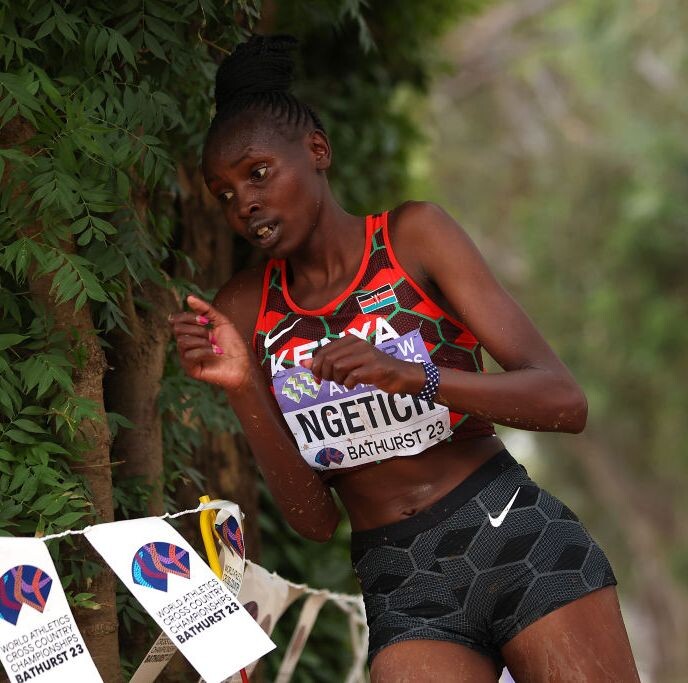
Ngetich clocked 29:26, the second-fastest time ever to win the race ahead of Emmaculate Anyango who clocked a Personal Best time of 30:01 to finish second. Christine Njoki completed the podium, clocking 30:41 to cross the finish line.
The 22-year-old has been in stellar form this season and will be keen to continue the winning streak to next year’s Olympic Games in Paris, France, where she intends to compete in the 10,000m.
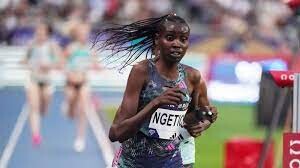
Ngetich previously clocked a world record time of 29:24 at the Brasov Running Festival in Romania but the record was not ratified by World Athletics since the course did not meet the required standards.
She is also fresh from reigning supreme at the Athletics Kenya Cross-Country Meet held at Kyongong Grounds, Bomet County.
She clocked 31:55 to win the race ahead of Cynthia Chepngeno and Sandra Chebet who finished second and third in respective times of 31:59 and 32:11.
Ngetich’s time is the second-fastest time by a woman in history. She now comes behind former London Marathon champion Yalemzerf Yehualaw, who clocked a world record time of 29:14 to win the women's event in Castellón, Spain earlier this year.
(11/20/23) Views: 99Abigael Wuafula
Heinz is Encouraging Runners to Start Fueling with Ketchup but is it a Bad Idea
The average marathoner would need to down over 60 packets to make it to the finish line.
We all have our favorite go-to gels and snacks to keep handy during a long run, but recently, one company has proposed turning to a different kind of packet to refuel during your runs—and you might have a drawer full of them in your kitchen.
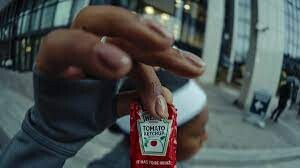
Earlier this month, Heinz released an advertisement claiming that “Runners everywhere are using Heinz ketchup packets on their runs.” The ad announces new ketchup-themed running routes available on various running apps. The routes, shaped like the iconic bottle of the famed ketchup, will point out which restaurants in cities like Toronto, Chicago, and New York City carry packets of Heinz, just in case you need to restock during a run.
But is ketchup the best thing to power you through miles? New York-based nutritionist Amy Stephens would like to squash that idea.
“Ketchup packets are not an efficient fuel source for distance runners,” Stephens told Runner’s World. “Too much sodium and not enough carbs.” With just 10 calories and two grams of carbs per packet, Stephens notes that it would take a lot of ketchup to fuel the typical runner’s caloric needs. “Athletes need about 30 to 60 grams of carbs per hour during a long workout,” she says. “That’s 15 packets at a minimum per hour.”
But what about a marathon? The average marathon time, according to RunRepeat, is 4:32:49. That would mean the average runner would need to down at least 60 packets over the course of 26.2 to meet their nutritional needs. That’s a lot of tomato.
“I’ve used a couple [of packets] on a burger, but the thought of eating 60 for a marathon is not appealing,” Stephens said. She noted that while the packets still contain electrolytes like potassium, they don’t make up for the lack of carbohydrates.
Stephens says that while the ease of finding ketchup through running apps sounds appealing, the packets could be a gateway to other, less useful products for a run. “While Heinz promotes the ease of finding packets in fast food chains, you might stop in to grab some ketchup and end up with a burger or fries,” she said.
Additionally, the condiment could have an adverse effect on some runners.
“Ketchup can cause reflux, and many runners are particularly susceptible to GI issues,” Stephens said. “During a hard, sustained effort, the gut has a harder time digesting foods. That’s why gels and sports fuels are specifically designed to contain easily digestible sugars from glucose and fructose.” She added that she wasn’t sure how quickly the body can convert tomato puree and high fructose corn syrup into usable energy.
If you’re looking for alternatives to ketchup but still want to maintain a budget, Stephens recommends packets of honey for a quick boost of energy and, barring that, a quick handful of dates.
(11/19/23) Views: 93Runner’s World
Kenyan's Peter Mwaniki Nueru wins Philadelphia half marathon in record time and Bernard Kiptoo Koech wins marathon
Kenya’s Bernard Kiptoo Koech flirted with the course record at the 30th edition of the Philadelphia Marathon held on Sunday (19) in Philadelphia PA his fifth marathon with no win managed to handle a nagging injury that he got two weeks ago when he won his first ever marathon in 2:14.26 missing out on the course record with one minute two seconds.
“I wasn’t expecting anything because I know the field was really competitive. But luckily, I don’t know what happened, unfortunately, they didn’t appear, so I was lucky to win,” said Koech.
Koech was followed by Joseph Whelan of United States in 2:14.98 with Sammy Rotich from Kenya closing the podium three finishes in 2:16.33.
United States Will Loevner and Pierre Billerot finished in fourth and fifth in respective time of 2:16.51 and 2:16.54.
Dennis Kipkosgei of Kenya who was making his debut over the distance and runs under the International Elite T.C stable that is managed by Keith Olson, finished in tenth place in 2:16.54.
The race course record of 2:13.28 set two years ago by Mike Chesire from Kenya remains standing.
Koech took home a cool Kshs 1,525,000 ($10,000) as prize money.

Peter Mwaniki Nueru, 25 set a new course record and won the half marathon on Saturday by nearly two minutes. He clocked 1:02:15. Peter trains at KATA (Kenyan Athletics Training Academy) in Thika Kenya (second photo in orange jersey). Lawrence Kipkoech placeed second clocking 1:04:04 and Travis Mahoney finished third in 1:04:10.
Everlyn Kemboi was first female clocking 1:11:02.
Athletes ran along the Benjamin Parkway in the cultural Museum District and wind through Philadelphia’s most scenic and historic neighborhoods. From the history-steeped streets of Old City, through one of the liveliest stretches of Center City, across the Schuylkill River into University City, up through the bucolic trails of Fairmount Park, and back down to canvas the banks of the river before finishing in front of the renown Philadelphia Museum of Art . The course is also sanctioned by USA Track & Field.
The half marathon was added to Philadelphia Marathon Weekend in 2006 and has seen an increase in athletes every year since. Whether as a test-run for first-time marathoners or as a challenging race along a scenic course, the Dietz & Watson Philadelphia Half Marathon has given thousands of athletes the opportunity to take on the Philadelphia Marathon Weekend on their own terms.
(11/21/23) Views: 91Kenya’s Barnaba Kipkoech took the top honors at the 12th edition of the Kobe marathon
Barnaba Kipkoech took the top honors at the 12th edition of the Kobe marathon held on Sunday (19) in Kobe, Japan.
The 30 year-old who came to this race with the fastest time on paper of 2:08.21 that he got last year at the Malaga Marathon where he took the honors, live up to the race expectations as he cut the tape first in a time of 2:11.19 with the Reigning Oceania 10,000m champion, Tim Vincent of Australia who was making a debut over the distance, coming home in second place in a personal best of 2:12.05.
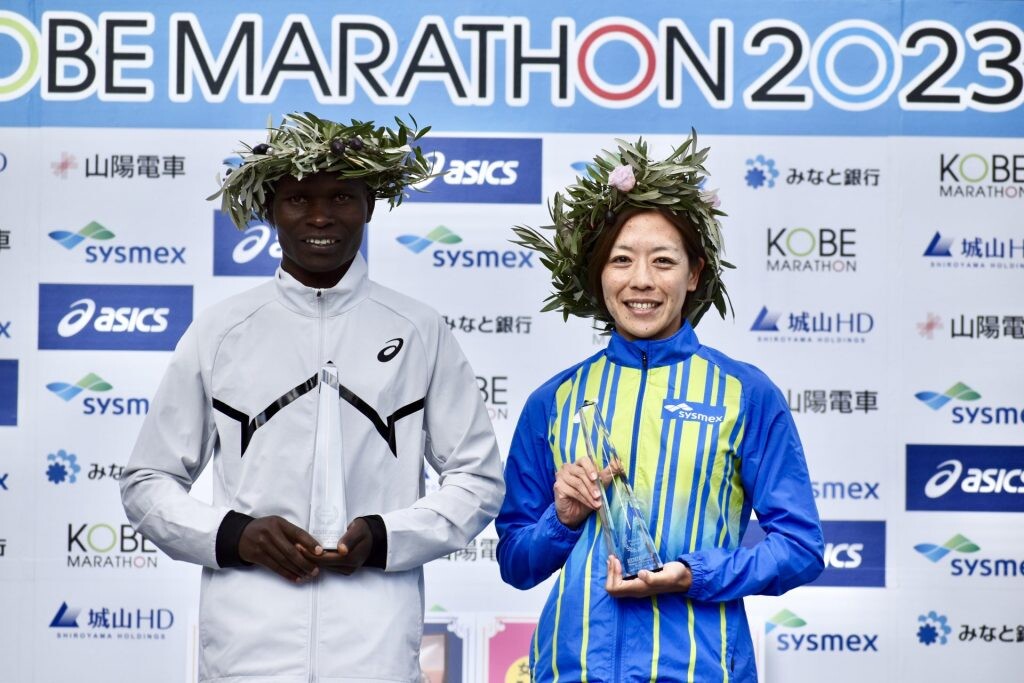
The 2019 Morocco’s 10,000m national champion, Hassan Toriss, who finished in twelfth place last year, made a great improvement this year, as he managed to be on the podium when he clocked 2:13.06 to wrap up the podium three finishes.
Last year’s thirteenth place finisher Ayoub Dardar of Morocco also made a significant improvement as he came home in fourth with Kenya’s Mathew Kibiwott finishing in fifth in respective time of 2:13.38 and 2:15.25.
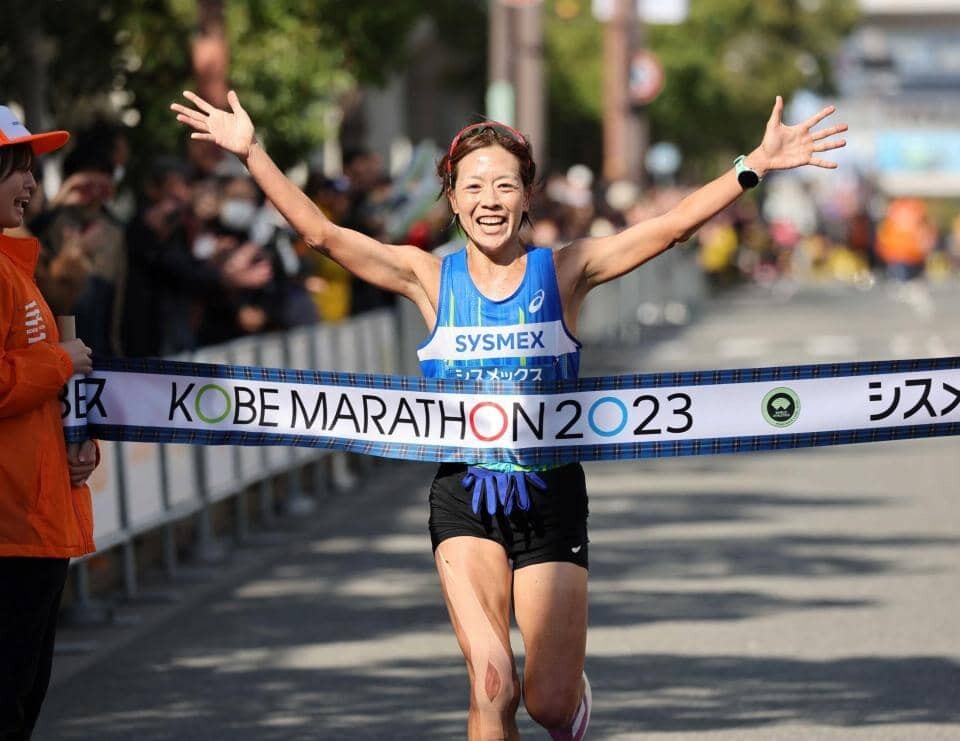
The race course record of 2:08.46 set four years ago by Uganda’s double 5000m National Champion, Geofrey Kusuro remains standing.
(11/20/23) Views: 90John Vaselyne
Joshua Cheptegei defends his choice of Eliud Kipchoge as the greatest marathoner
Joshua Cheptegei has shared why he thinks Eliud Kipchoge is the greatest marathoner as he gears to emulate the Kenyan at the Valencia Marathon.
Reigning world 10,000m champion Joshua Cheptegei is keen to follow in the footsteps of former world marathon record holder Eliud Kipchoge as he eyes an Olympic return and debut at the Valencia Marathon.
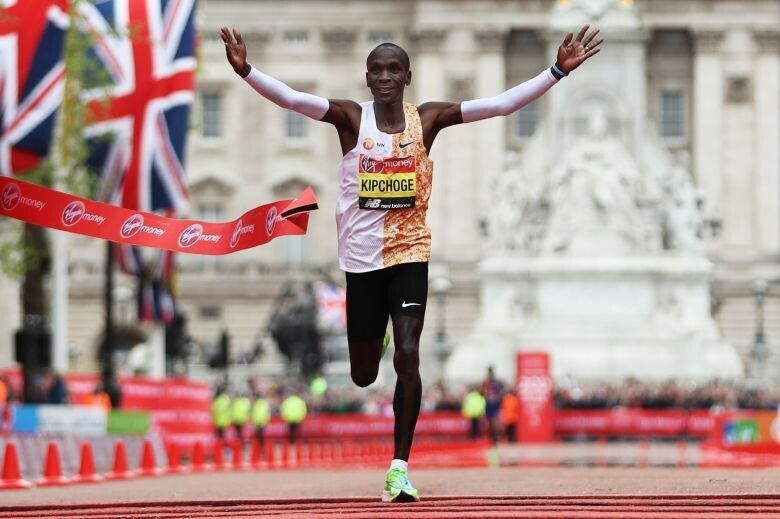
Cheptegei will be keen to apply some of the tactics he has gathered from Kipchoge, who is his role model. Kipchoge also made a switch from the track to the marathon and he has since been successful in his races.
Cheptegei will also be keen to follow in the footsteps of his compatriot Stephen Kiprotich who is a gold medallist in both world and Olympic marathons.
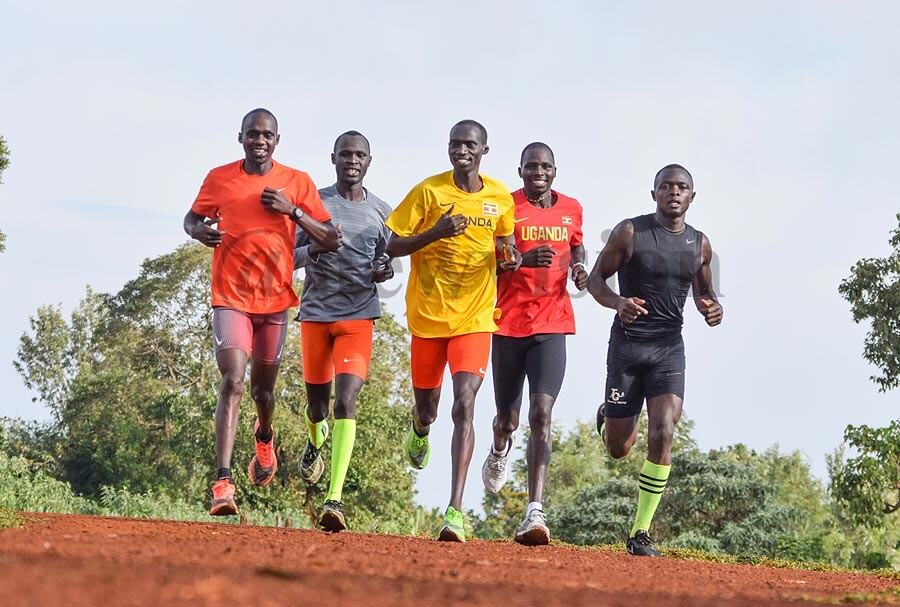
“For me, Eliud is the greatest…he's one of the guys that inspired me a lot when I was starting up my career and up to now, his legacy still inspires me a lot.
"We normally share whenever there’s an opportunity and I'm always grateful that his words have shaped me over the years, and he is always keeping an eye on me and guiding me in a good way.
"I wanted to shift from the track after the 2020 Olympic Games, but Stephen told me to stay longer.
"Stephen has been one of the guiding pillars, of the timing for the marathon, and this year he gave me the green light.
"He (told me) you can test yourself in a race and if you have challenges, you can bounce back on the track again after maybe six or seven months,” Cheptegei said as per Olympics.com.
After making his debut at the Valencia Marathon, Cheptegei intends to make a comeback to the track at the Paris Olympics next year following his new challenge.
He made his debut at the Olympic Games in Rio, where he finished sixth in the 10,000m and eighth in the 5000m.
He then returned to the delayed 2020 Tokyo Olympic Games where he won the 5000m and finished second in the 10,000m.
“It looks like I'm almost done on the track, but not yet done. I am still in love with the 10,000m and still want to go to Paris and win the 10,000m.
"And maybe the outcome in Valencia will (determine) if I do the 10km and the marathon…It could be something to venture into,” Cheptegei said.
(11/21/23) Views: 90Abigael Wuafula
Jacob Kiplimo continued his return to racing with a stunning performance at the NN Zevenheuvelenloop
World cross-country champion Jacob Kiplimo continued his return to racing with a stunning performance at the NN Zevenheuvelenloop in Nijmegen on Sunday (19), equalling the world 15km best with 41:05.
The Ugandan was forced to miss the World Championships in Budapest and World Road Running Championships in Riga through injury, but returned to action at the end of last month with a convincing win at the Cross Country Tour Gold meeting in Atapuerca.
Today he notched up another victory, winning by 99 seconds to equal the world best set five years ago by his compatriot Joshua Cheptegei.
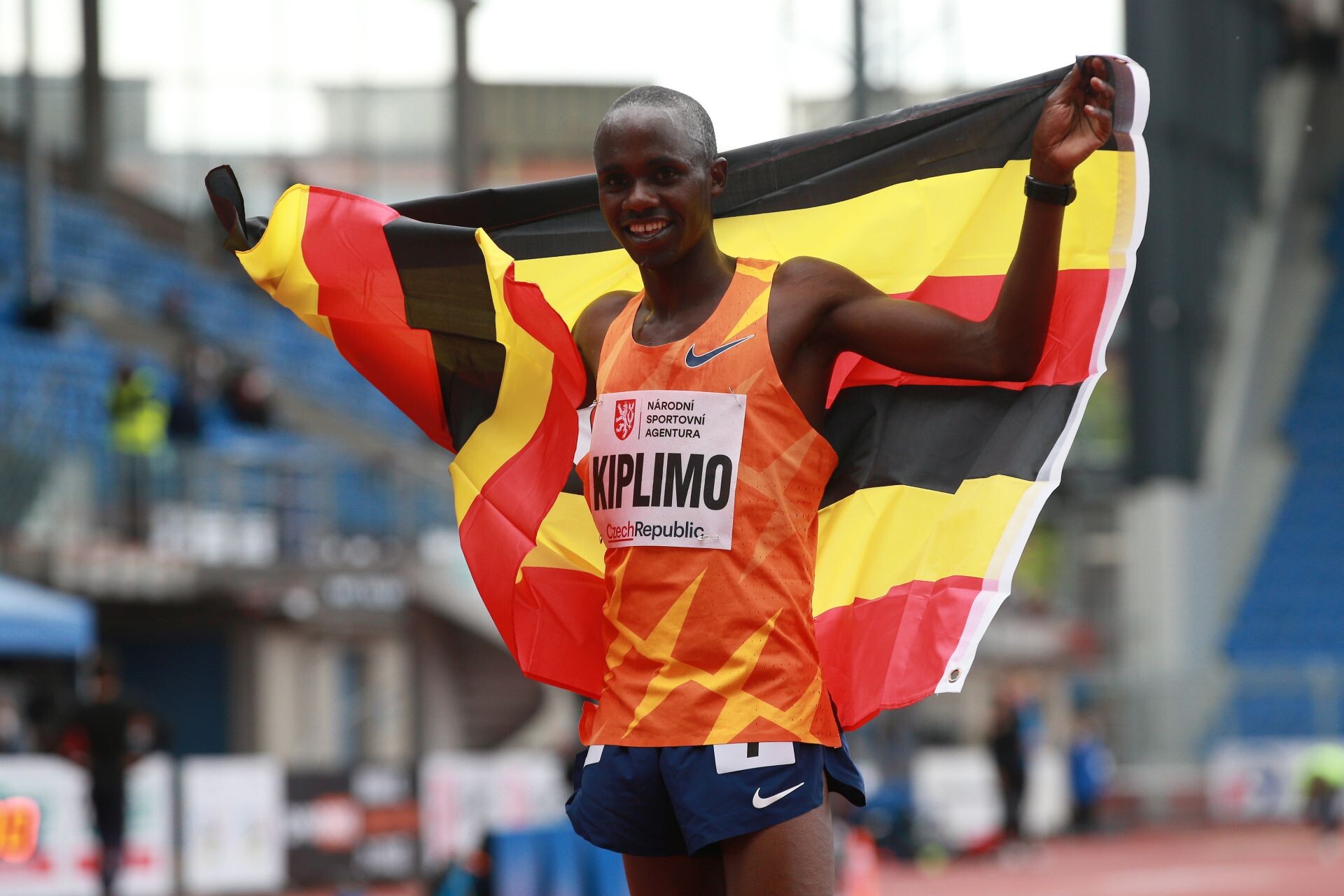
He started out at a relatively conservative pace, mindful of the fact there was a big climb to come between 3.5km and 5km. He reached 3km in 8:42 – 23 seconds down on Cheptegei’s pace from 2018 – and got to 5km in 14:24, by which point compatriot Rogers Kibet was already struggling to stay in touch.
Shortly after, Kiplimo was out in front alone and he passed through 8km in 22:31 with a 24-second leading margin. He hit the 10km checkpoint in 27:49, the exact same split Cheptegei recorded during his landmark run. From that point on, Kiplimo’s pace fluctuated slightly; sometimes ahead of course record pace, sometimes behind it.

A 2:31 final kilometer – his fastest of the race – brought him home in 41:05. Kibet held on to second place in 42:44, securing a Ugandan 1-2.
Although 41:05 is the fastest ever performance in a standalone 15km race, Kiplimo recorded a 15km split of 40:27 en route to his half marathon world record in Lisbon in 2021.
World steeplechase record-holder Beatrice Chepkoech was a convincing winner of the women’s race, crossing the line in 47:12 to finish 43 seconds ahead of Israel’s Lonah Salpeter.
(11/20/23) Views: 87World Athletics
Kiptum, 23, predicts how long his athletics career will last after experts' concerns
Kelvin Kiptum has shared his ambitions of making sure he continues running for the next 10 or 15 years and win as many races as he can.
Reigning world marathon record holder Kelvin Kiptum is not afraid of the longevity in his marathoning career.
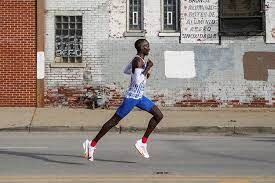
Many experts have revealed that since he started his career at a young age, 23, his longevity in the sport is not guaranteed but Kiptum thinks otherwise.
The Valencia Marathon champion explained that he plans to keep running for the next 10 to 15 years and win as much as he can.
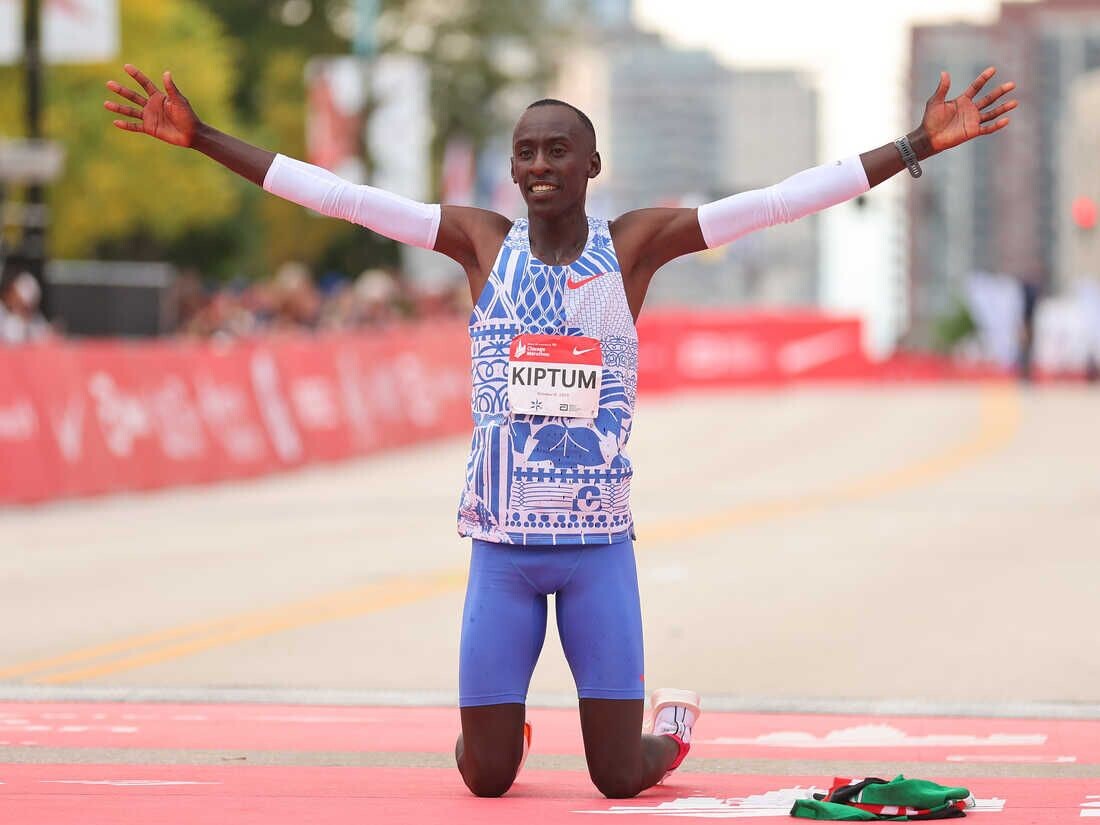
“My ambition is to run at the top of the marathon in the next ten or fifteen years and win as much as possible. But nothing guarantees that.
"My secret is training, running many kilometers a week. I'm not afraid of that, but you can always get injured. What then? Besides, I don't walk alone.
"Tamirat Tola (an Ethiopian runner) won the New York Marathon in 2 hours, 4 minutes and 58 seconds. The course there is very difficult, so that was a great time. You never know how good he will be in Paris,” Kiptum said as per De Tijd.
Just at 23, Kiptum has already made history in all the marathons he has competed in. He made his debut at the Valencia Marathon last year where he clocked the fastest time in a debut to win the race.
He then proceeded to the London Marathon earlier this year and clocked the second-fastest time in history to clinch top honours. Kiptum then shattered Eliud Kipchoge’s world record time of 2:01:09 at the Chicago Marathon after cutting the tape in 2:00:35.
In April next year, he will take part in the Rotterdam Marathon and then, most importantly, the Olympic Games in Paris.
If he wins gold there, he will have achieved most of his goals and there will most likely be no challenge for him but he promised that he will continue running despite having achieved great milestones already.
(11/21/23) Views: 84Abigael Wuafula
How Long Do Super Shoes Last? Here’s What the Latest Data Says.
Fancy new midsole materials like PEBA make you faster, but at the cost of durability
The eternal question of how long your running shoes should last became suddenly topical a few months ago, when Tigst Assefa set a world marathon record in what Adidas billed as essentially a single-use marathon shoe. This development sparked some important discussions about sustainability, accessibility, and fairness. But it also served as a reminder of how little we actually know about the useful life of running shoes, especially in the new era of thick-foamed super shoes.
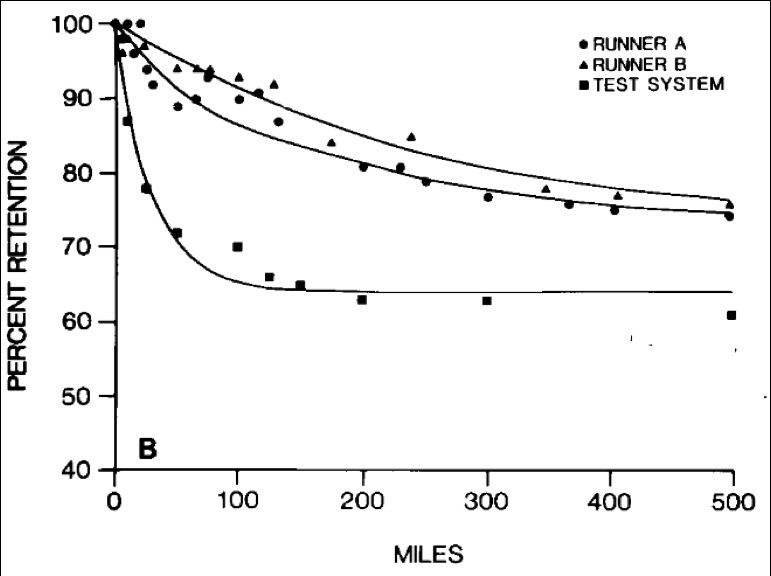
Fortunately, there’s some interesting new data in a study from researchers in Spain, led by Victor Rodrigo-Carranza of the University of Castilla-La Mancha. In the Scandinavian Journal of Medicine and Science in Sports, they compare shoes made with a modern super foam to a traditional EVA midsole before and after 280 miles, and find that the new midsole does indeed lose its magic more quickly—so much so, in fact, that the super shoe is no better than the regular shoe at that point.
Before digging into the specifics of the new study, it’s worth sketching in some context. The conventional wisdom that I’ve heard throughout my running life is that shoes typically last somewhere between 300 and 500 miles. This is based on some mix of cumulative experience and imperfect data, some of it published and some presumably locked away in shoe-company filing cabinets.
For example, there’s a 1985 study that measured shock absorption at frequent intervals between 0 and 500 miles, using a machine to simulate the impacts of running as well as two volunteers who racked up 500 real-life miles. Here’s an example of how shock absorption changed with mileage for one particular shoe:
The machine version of running obviously didn’t replicate the demands of in-person running very well, but the two human volunteers show similar patterns. Overall, the human testing found that shoes retained about 80 percent of the shock absorption after 150 miles, and 70 percent after 500 miles. You can see that the curve flattens out between about 300 and 500 miles, which is presumably where the conventional wisdom on shoe lifespan comes from. Conversely, you could argue that once you’re past 300 miles, the shock absorption isn’t going to drop much further, so if you’ve made it that far you might as well keep running in them until they (or you) fall apart. More on that below.
You might wonder whether shock absorption, as measured by a hydraulic machine, is really what matters to runners. More recent research has looked at other metrics: this 2020 study, for instance, used force-sensing insoles to measure the peak pressure on different parts of the foot, testing how it changed as a New Balance 738 shoe went from new, to 215 miles, to 430 miles. As the image below shows, the highest pressures are seen in the midfoot and forefoot:
Those pressures stayed virtually unchanged after 430 miles—but the midfoot peak pressure increased from 388 to 450 to 590 kilopascals, a 50 percent jump. It’s not clear exactly why the midfoot pressure increases. It could be that the relative lack of cushioning in the midfoot makes it less durable; it could be that the higher pressures on the rearfoot and forefoot break down the cushioning in those regions and shift load to the midfoot. Either way, it’s clear that the objective load on the foot has changed after 430 miles. And interestingly, the perceived cushioning reported by the volunteers picked up this change: those who reported feeling less cushioned in the midfoot in the worn shoes did indeed tend to have the highest peak midfoot pressures.
So the overall picture in the pre-super-shoe era was fairly muddy, but basically supported the view that shoes progressively lose their cushioning and reach bottom somewhere in that 300 to 500 mile range. Then came Nike’s Vaporfly in 2017, using a carbon fiber plate and a thick layer of cushioning to promise better running economy in exchange for a few hundred bucks—and, in the footnotes, less durability. The unsourced number that I frequently heard floating around after the Vaporfly’s release was that you should trust them for 100 miles or so.
It’s worth pausing here to say a few words about running shoe foams. Carlos Sánchez at RunRepeat has an impressive and exhaustive primer on the huge range of high-performance foams now on the market, which is worth digging into if you’re interested. A highly simplified history is that most running shoes used to use EVA (ethylene-vinyl acetate), then in 2013 Adidas’s Boost made TPU (thermoplastic polyurethane) popular, and then in 2017 Nike’s Vaporfly made PEBA (polyether block amide) the state-of-the-art. One study found that energy return was 66 percent for EVA, 76 percent for TPU, and 87 percent for PEBA.
While there’s been plenty of chatter about carbon-fiber plates, the weight of evidence is increasingly that most of the magic in super shoes comes from the foams. Unfortunately, the very property that makes them so good—their ethereal lightness—also makes them less durable. Of the more than three-dozen modern foams that Sánchez reviews, the main differences arise from the tweaks manufacturers make to trade off performance and longevity (along with price, of course). That makes it hard to issue general guidance about how long super shoes last: it depends on the shoe and the foam.
Still, one data point is better than zero, which brings us back to Rodrigo-Carranza’s study. The shoes he used were special prototypes manufactured for the study by On, almost identical except that one set had an EVA midsole while the other had a PEBA midsole. Both versions had a curved carbon-fiber plate. Twenty-two volunteers performed a running economy test to measure how much energy they burned at a given pace, once in fresh shoes and once in pre-worn shoes. (The researchers themselves ran exactly 280 miles in each pair of shoes to pre-wear them.)
One key finding: energy consumption in the new PEBA shoe was 1.8 percent lower than in the new EVA shoe. That bolsters the case that the foam itself is a big part of the magic, since both shoes had carbon fiber plates. (Not all PEBA foams are created equal, so we don’t know if On’s foam is as good as Nike’s ZoomX.) The other key finding: after 280 miles, there was no significant difference between the two shoes. The EVA shoe didn’t lose anything at all, whereas the PEBA shoe got 2.2 percent worse.
It’s not worth making any grand extrapolations from a single datapoint about when one type of shoe gets better than the other. Who knows what happens after 280 miles? For that matter, who knows what happened after 26 miles? Moreover, there are lots of other factors that might be relevant. One of the interesting claims in Sánchez’s review is that super foams maintain their properties even in frigid winter conditions, while EVA-based foams get much more rigid. In some shoes, firmness more than doubled after Sánchez’s freezer test. Maybe a worn-out super shoe is still a better bet than a newer EVA shoe for those of us who are latitudinally challenged. He also notes that shoe foams take more than 24 hours to recover from a run, and some recover faster than others, so it makes sense to alternate different pairs in order to maximize both comfort and shoe lifetime.
My own approach to shoe durability is, admittedly, not one that’s easy to generalize. I generally have two or three pairs on the go at any given time, and I run in them until they start to feel flat. It’s a noticeable sensation, especially if one of the other pairs in my rotation is relatively new and bouncy. Then, in the spirit of that graph above showing a plateau after about 300 miles, I keep running in them—but I pay more attention to how I feel during and after runs, and to whether the wear on the outer sole is changing the angle of my footstrike. Once I start to feel a few aches and pains, I retire the flat shoe. That approach works pretty well to keep me healthy, but the new data suggests that it’s probably not maximizing my performance. Anyone want to buy a pair of gently used six-year-old OG Vaporflys?
(11/18/23) Views: 82

